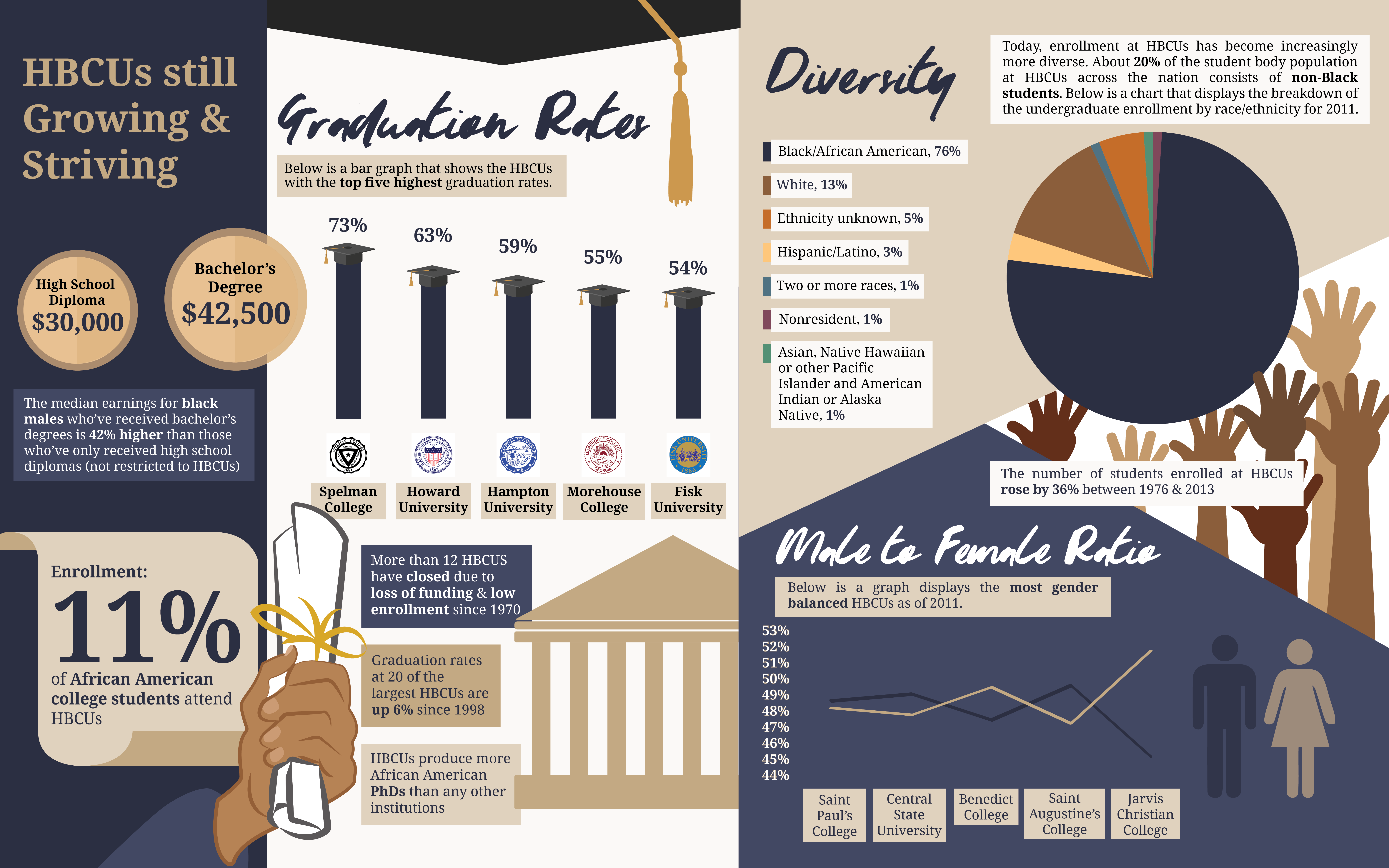- HOME
- PART 1
- PART 2
- PART 3



Amongst all of the positives effects of the integration of the higher education system there was a downside that impacted HBCUs. Since black students were now permitted to apply to and to attend any university that they wanted, the rate of black students attending HBCUs fell significantly. Similar institutions, labeled predominantly black colleges and universities (PBCUs), or schools in urban neighborhoods that were mainly attended by underprivileged minority students, began to demand government funding to help support their operations, which eventually made less funds available for HBCUs. The loss of funds prompted the closing or merging of HBCUs.
The integration of the higher education system affected private very HBCUs severely. By 2011, less private HBCUs existed than had existed in the previous 90 years. The face of HBCUs in America had been altered radically since the initial formation of the first HBCU in 1837. The number of private historically black institutions had once exceeded the number of public HBCUs. By 2010, public HBCUs overshadowed the number of private institutions due to the latter’s mounting financial troubles.
The number of non-black students, faculty, and staff at HBCUs had risen greatly during that time, suggesting a shift in diversity. In contrast, the amount of black faculty at traditionally white institution (TWIs) had not risen as greatly as it had at HBCUs in the early 2000s. Even though a vast majority of the nation’s black college students attend TWIs, HBCU still produce about 20% to 30% of all black college graduates in the nation.

There are a total of 105 HBCUs still in existence today represented in 20 US states and territories across the United States. Below is a map representing the states and territories where HBCUs still exist today. Alabama: 15 Arkansas: 4 Delaware: 1 District of Columbia: 2 Florida: 4 Georgia: 10 Kentucky: 2 Louisiana: 6 Maryland: 4 Mississippi: 7 Missouri: 2 North Carolina: 11 Ohio: 2 Oklahoma: 1 Pennsylvania: 2 South Carolina: 8 Tennessee: 7 Texas: 9 United States Virgin Islands: 1 Virginia: 5 West Virginia: 2